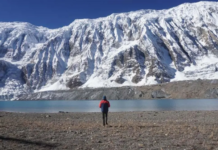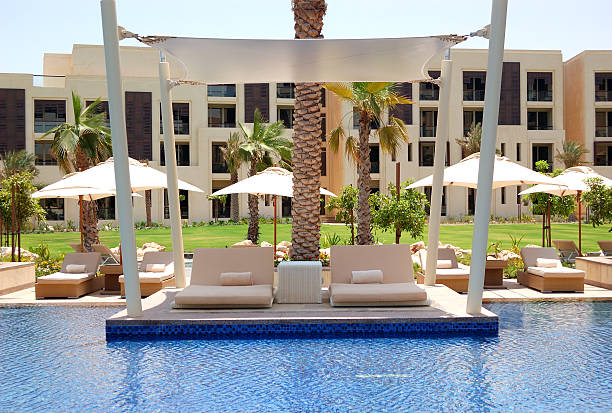The Annapurna Circuit Trek is one of the most iconic and scenic trekking routes in the world, drawing thousands of adventurers each year to Nepal’s majestic Himalayas. While many trekkers focus on popular highlights like Thorong La Pass or Muktinath Temple, the circuit is dotted with lesser-known marvels that most overlook.
These hidden gems—quiet villages, sacred sites, detours, and stunning viewpoints—can elevate your Annapurna experience from memorable to truly unforgettable. In this guide, we’ll reveal what most trekkers miss and why you should take the road less traveled on your next Himalayan adventure.
Why the Annapurna Circuit Is More Than Just a Trek
Stretching over 160–230 kilometers depending on your chosen route, the Annapurna Circuit isn’t just about climbing peaks and crossing passes. It’s a journey through multiple climatic zones, from subtropical jungles to alpine terrain and the windswept deserts of Mustang. Along the way, you encounter diverse cultures, ancient traditions, and spiritual landmarks that many rush past in their quest to complete the trek quickly.
If you’re planning the Annapurna Circuit—or revisiting it—it’s worth slowing down to explore these lesser-known wonders.
1. Ngyawal Village – A Peaceful Manang Alternative
Just a short detour from the bustling village of Manang, Ngyawal offers a much quieter and more authentic experience. With its Buddhist stupas, mani walls, and stone-built houses, the village provides insight into the traditional Manangi way of life—without the crowds.
- Why visit? Quieter homestays, panoramic views of the Annapurna range, and fewer tourists.
- Pro Tip: Spend a night here for acclimatization and enjoy peaceful sunrise hikes before rejoining the main trail.
2. Ice Lake (Kicho Tal) – The Best Acclimatization Day Hike
Most trekkers use Manang as an acclimatization stop, and while Gangapurna Lake is popular, the Ice Lake hike is an extraordinary hidden gem. Sitting at 4,600 meters, the trail takes you through yak pastures and blooming alpine meadows to a pristine glacial lake surrounded by snow-capped peaks.
- Round trip time: 5–6 hours from Manang or Ngyawal
- Highlights: Jaw-dropping views of Annapurna II, IV, and Tilicho Peak
3. Braga Monastery – Ancient and Atmospheric
While in the Manang area, don’t miss the Braga (Braka) Monastery, one of the oldest and most atmospheric Buddhist monasteries in the region. Built into the cliffs, the monastery features centuries-old statues, Thangka paintings, and prayer halls overlooking the valley.
- Founded: Over 500 years ago
- Why it matters: Spiritual energy and an excellent place to meditate or reflect
Many trekkers pass by Braga quickly on their way to Manang—don’t be one of them.
4. Tilicho Lake – A Hidden High-Altitude Paradise
Not technically part of the main circuit, Tilicho Lake is a high-altitude marvel at 4,919 meters. Accessible via a 3–4 day side trip from Manang, this lake is considered one of the highest in the world and is sacred to both Hindus and Buddhists.
- Trail difficulty: Challenging but rewarding
- Why it’s special: Crystal-clear turquoise water, surrounded by a surreal moonscape of ice and stone
Though it adds extra days, visiting Tilicho Lake is a spiritual and visual highlight for many.
5. Chame’s Hot Springs – A Natural Spa in the Mountains
As the administrative center of the Manang District, Chame is often treated as just a stopover. But just a short walk from the village lies a natural hot spring nestled beside the Marsyangdi River—perfect for soaking your tired legs after a long trek.
- When to go: Ideal during the chilly mornings or evenings
- Extra bonus: Gorgeous river views and peaceful forest ambiance
Most trekkers don’t realize these hot springs are accessible—ask your guide or a local.
6. Dharapani to Bagarchhap – A Botanical Wonderland
This early part of the trek, often rushed through in favor of reaching higher elevations, is rich in biodiversity and cultural fusion. Bagarchhap, a small Tibetan-style village, marks the shift from Hindu to Buddhist influence.
- What to see: Rhododendron forests, waterfalls, and traditional Tamang homes
- Ideal for: Photography, nature lovers, and culture buffs
This section often goes unnoticed in the rush to get to higher elevations, but it holds its own serene magic.
7. Kagbeni – Gateway to the Forbidden Kingdom
Kagbeni is the last village before the Upper Mustang region and serves as the cultural transition point between the lower Annapurna and the Tibetan plateau. Its medieval alleyways, red-walled monasteries, and windswept plains make it one of the most photogenic stops on the circuit.
- Bonus tip: From Kagbeni, you can also get a glimpse of Upper Mustang without needing a special permit if you stick to the official border area.
8. Marpha – The Apple Capital of Nepal
Nestled in the Kali Gandaki Valley, Marpha is famous for its apple orchards, brandy, and charming cobblestone streets. Most trekkers treat it as a brief snack stop, but the village is well worth a longer stay.
- Try this: Apple pie, apple wine, and apple brandy
- Fun fact: The town also has a monastery and an old-world charm that encourages you to slow down
It’s a great place to rest and refuel after crossing Thorong La Pass.
9. Dhumba Lake – A Hidden Jewel near Jomsom
If you continue past Jomsom, take a short hike to Dhumba Lake, a sacred lake surrounded by snow-covered peaks and colorful prayer flags. It’s a peaceful alternative to the often-busy Jomsom area and provides excellent birdwatching and photo ops.
- Best time to visit: Morning or late afternoon
- Added bonus: Fewer crowds and a sacred atmosphere
10. Tukuche – A Forgotten Trade Hub
Once an important trading post along the salt route to Tibet, Tukuche is now a quiet village rich in history. Featuring traditional Thakali architecture and an old distillery, it’s a wonderful place to explore Nepali heritage.
- Don’t miss: Tukuche Distillery (tasting tours available), monasteries, and Himalayan views
Comparing Hidden Gems with Everest Base Camp
While the Everest Base Camp Trek offers its own share of wonders, it’s more linear and focused on one grand destination—Everest. The Annapurna Circuit, by contrast, is circular and offers numerous opportunities for detours and hidden discoveries.
EBC Pros:
- Iconic mountain destination
- Sherpa culture
- Spiritual landmarks like Tengboche Monastery
Annapurna Pros:
- Diverse terrain and cultures
- Numerous side treks and lesser-known highlights
- Easier access to solitude and authentic village life
Final Thoughts: Slow Down and Savor the Circuit
The Annapurna Circuit is not a race—it’s a journey meant to be savored. While popular stops like Thorong La and Muktinath are awe-inspiring, it’s the hidden gems that truly capture the spirit of the Himalayas. By taking time to explore lesser-known villages, sacred lakes, and quiet monasteries, you’ll not only enrich your trek but also support smaller communities that keep this region vibrant.
So next time you consider the Annapurna Circuit Trek, slow your pace, open your eyes, and let the hidden heart of the Himalayas reveal itself to you.










